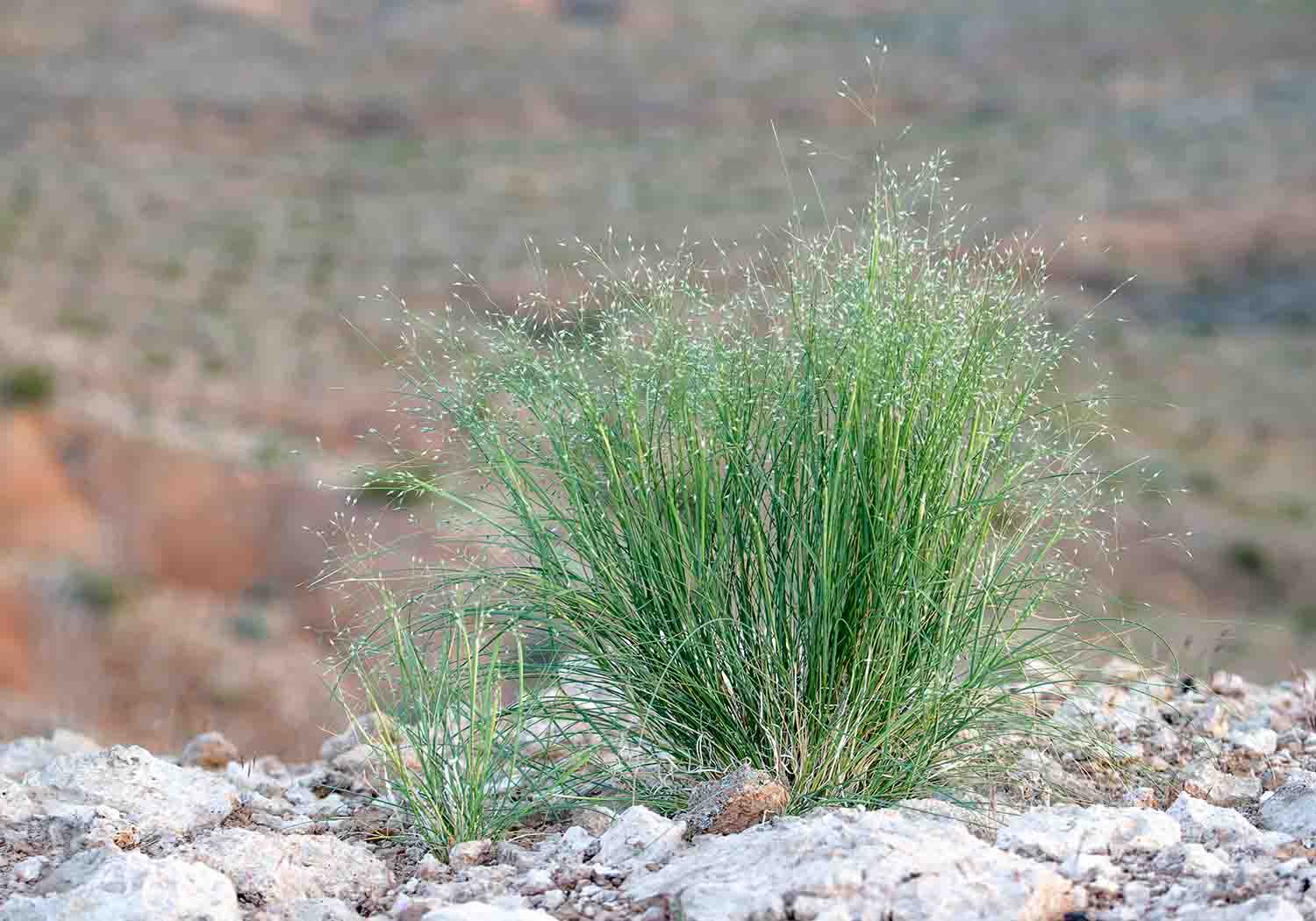Indian Rice Grass
About Indian Rice Grass
Indian rice grass, or more commonly Indian ricegrass, was officially recognized as the Utah State Grass in 1990 (Utah Code). S.B. 104 was sponsored by Alarik Myrin (R-Altamont). The Bill was signed into law by Governor Norman Bangerter on March 12, 1990.
The Society for Range Management’s Utah Section began campaigning for a state grass in the mid-1980s and after studying many species the field was narrowed to four candidates: Indian ricegrass, bluebunch wheatgrass, galleta grass, and Great Basin wildrye. Indian ricegrass was then selected as the favorite. The state grass bill was introduced by Senator Myrin, a member of the Society.
Indian ricegrass (Achnatherum hymenoides), also known as Indian millet or sand-grass, is a native drought tolerant, perennial bunchgrass. It is 6 to 30 inches tall. It has many tightly rolled, slender leaves that grow from the base of the bunch, giving it a slightly wiry appearance. The inflorescence is a spreading panicle with a single flower at the end of each hair-like branch. It flowers from April through June. It is green when it blooms in the spring and turns straw-colored by August. It grows at elevations between 2,000 and 10,000 feet.
Indian ricegrass seeds have been utilized as a grain staple by the native peoples. It served as a primary food for indigenous peoples prior to the arrival of corn. Seeds were gathered, dried, and milled into flour. This flour was used in the preparation of foods, including porridges, soups, dumplings, tortillas, and bread. Notably, some tribes, such as the Western Apache, would mix this flour with cornmeal and water to produce a type of mush.
Indian ricegrass is a very palatable food source for both livestock and wildlife. Indian ricegrass is a highly palatable forage for domestic cattle, sheep, and horses for most of the year. However, its palatability decreases in late spring when the seed heads are developing. The large, edible seeds of Indian rice grass are also a food source for a variety of wildlife, including buffalo, elk, deer, antelope, deer mice, voles, chipmunks, ground squirrels and all species of seed-eating birds.
Today, this grass is a fine addition to any xeriscape and will grow quite large if given the room. The open, spangled appearance when in flower or fruit is very attractive, especially in backlight. Indian ricegrass is also the state grass of Nevada and Oklahoma.
Scientific name synonyms are: Achnatherum hymenoides, Oryzopsis hymenoides, Stipa hymenoides, and Eriocoma cuspidata. The USDA symbol is ACHY.
Indian Ricegrass Scientific Classification
Kingdom: Plants – Plantae
Division: Flowering Plants – Anthophyta
Class: Monocots – Monocotyledoneae
Order: Grasses/Sedges – Cyperales
Family: Grasses – Poaceae
Species: Indian Ricegrass – Oryzopsis hymenoides
